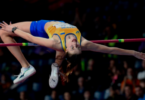The Deaflympics stands as one of the most prominent international sporting events for athletes who are deaf or hard of hearing. With its roots stretching back to the early 20th century, the Deaflympics is a testament to the spirit of inclusion, competition, and athletic excellence within the global deaf community. It offers athletes the opportunity to showcase their talents on an international stage, providing an environment where the barriers of sound and communication are no longer obstacles but rather unique aspects of the competition. In this article, we explore the history, significance, sports, and impact of the Deaflympics, highlighting its role in shaping a more inclusive world of sports.
Origins and History of the Deaflympics
The Deaflympics, initially known as the International Games for the Deaf, was first held in Paris in 1924. Founded by the French physician and educator Eugène Rubens-Alcais, the event was designed to give athletes who were deaf the chance to compete on a global level. The inspiration for the Games came from the belief that athletes who were deaf should be able to participate in an event that mirrored the prestigious Olympic Games but without the limitations imposed by their hearing impairments.
The first edition of the Deaflympics featured just 148 athletes from nine countries, competing in a handful of sports. Over the years, the event grew exponentially, with more countries and athletes taking part in various sports. Today, the Deaflympics is recognized by the International Olympic Committee (IOC) and is organized by the International Committee of Sports for the Deaf (ICSD).
The Sports at the Deaflympics
The Deaflympics offers a diverse range of sports, most of which mirror the events in the traditional Olympic Games. These include athletics, basketball, football (soccer), volleyball, swimming, and tennis, among others. The format and rules of the events are largely the same as those used in the Olympics, though there are adaptations to accommodate the needs of deaf athletes.
The key difference in the Deaflympics is the use of visual communication. For instance, referees use hand signals and visual cues to manage the flow of the game, and in sports like track and field, the starting signal is often a light or visual signal rather than an auditory one. This ensures that all athletes can fully participate and respond to the events regardless of their hearing abilities.
The Significance of the Deaflympics
The Deaflympics serves as a critical platform for athletes who are deaf to demonstrate their abilities in a supportive and competitive environment. Beyond the athletic achievement, the event holds deep cultural and social significance. The Games represent a celebration of the deaf culture, showcasing the talents of athletes who may otherwise be excluded from mainstream sports due to communication barriers.
Additionally, the Deaflympics promote visibility and representation for the deaf community. It challenges stereotypes and helps foster a deeper understanding of the challenges faced by deaf individuals, both in the sports world and beyond. The event also emphasizes the importance of accessibility, equality, and inclusivity, principles that resonate deeply in today’s global society.
A Global Gathering
One of the most remarkable aspects of the Deaflympics is the international nature of the competition. Athletes from all corners of the globe come together to compete in an atmosphere that emphasizes camaraderie and mutual respect. Countries with strong deaf sports programs, such as the United States, Russia, Turkey, and Poland, regularly field highly competitive teams, while nations with emerging deaf communities also use the Games to build up their programs and raise awareness about the talents of deaf athletes.
The Deaflympics has expanded over time to include winter sports such as snowboarding and ice hockey, broadening its appeal and providing new avenues for competition. The most recent Deaflympics, held in Caxias do Sul, Brazil in 2022, included over 80 countries and showcased more than 1,000 athletes in various disciplines.
The Role of the Deaflympics in Advocacy and Awareness
The Deaflympics plays a vital role in advocating for the rights and recognition of deaf athletes. By providing a platform for these athletes to shine on the world stage, the Games help to break down societal barriers and encourage greater understanding of the challenges faced by deaf individuals. The event is also crucial in pushing for better accessibility and inclusion in all sports and public spaces.
Moreover, the Deaflympics fosters unity among deaf athletes from various cultural backgrounds, allowing them to form bonds that extend beyond sports. This international exchange is invaluable in creating a shared sense of purpose and support.
Conclusion: A Legacy of Empowerment
The Deaflympics represents much more than just a sports competition. It symbolizes the strength, resilience, and excellence of the global deaf community. As an event that celebrates diversity, equality, and inclusion, the Deaflympics not only provides an arena for top-level competition but also highlights the power of sports in uniting people from all walks of life.
As we look toward the future, the Deaflympics will continue to inspire new generations of athletes and advocates. The legacy of the Games reminds us that no matter our background or circumstances, sports can provide an equal opportunity for achievement, camaraderie, and the celebration of human potential. Through the Deaflympics, the world is reminded that deaf athletes are no less capable of achieving greatness, and in fact, they do so with remarkable determination and spirit.







